BEST OF CHILE’S ATACAMA DESERT
What is so special about Atacama Desert?
The Atacama Desert in Chile is a unique and stunning destination that offers a range of outdoor activities and experiences.
Chile’s Atacama Desert, the driest nonpolar desert on Earth, stretches across a roughly 600-mile (1,000 kilometers) tract of land wedged between the coastal Cordillera de la Costa mountain range and the Andes Mountains. The driest desert in the world is a territory of vast horizons, without shadows, where tourism coexists with avant-garde astronomical projects. San Pedro de Atacama is the capital and starting point to explore its lunar valleys, geysers, salt flats, a sacred volcano and a lagoon where it is possible to float like in the Dead Sea, under an always blue pre-altiplano sky.
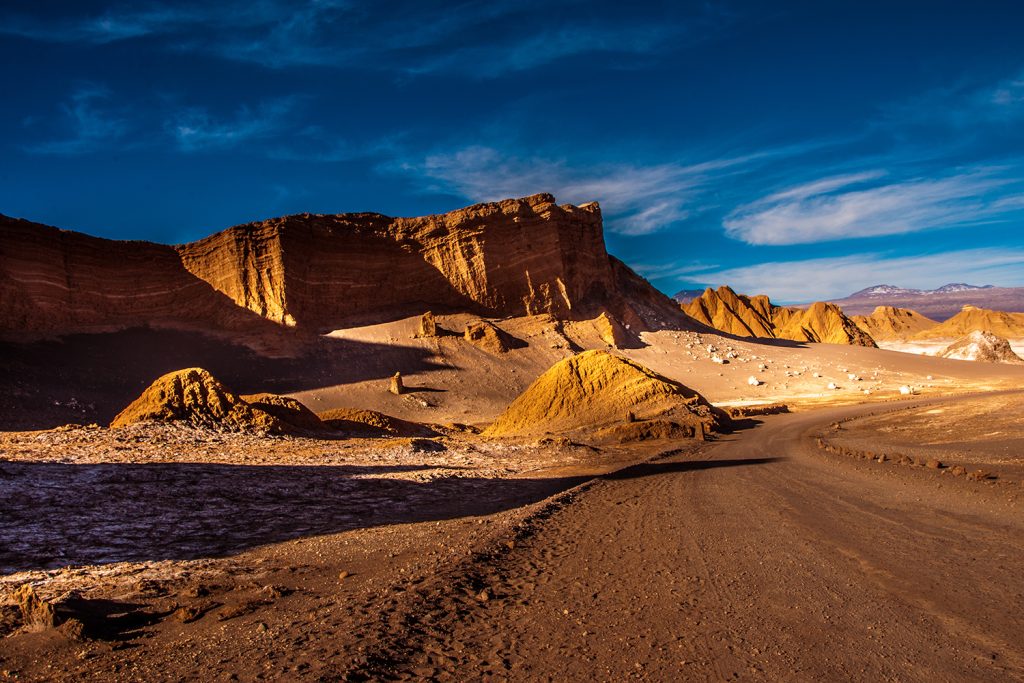
San Pedro de Atacama: the town
San Pedro de Atacama is the most visited tourist destination in the country. The popularity of this adobe town stems from its position in the heart of some of northern Chile’s most spectacular scenery. However, before there were luxury hotels there and Caracoles Street was home to as many tourists as Fifth Avenue, Atacama was a cult destination for unconventional travelers, romantic and adventurous hippies. And, in part, it still is. Only now the segment has widened to the point that this desolate portion of northern Chile, pure excess of salt, volcanoes and cracked earth, receives more tourists than Easter Island and Torres del Paine.
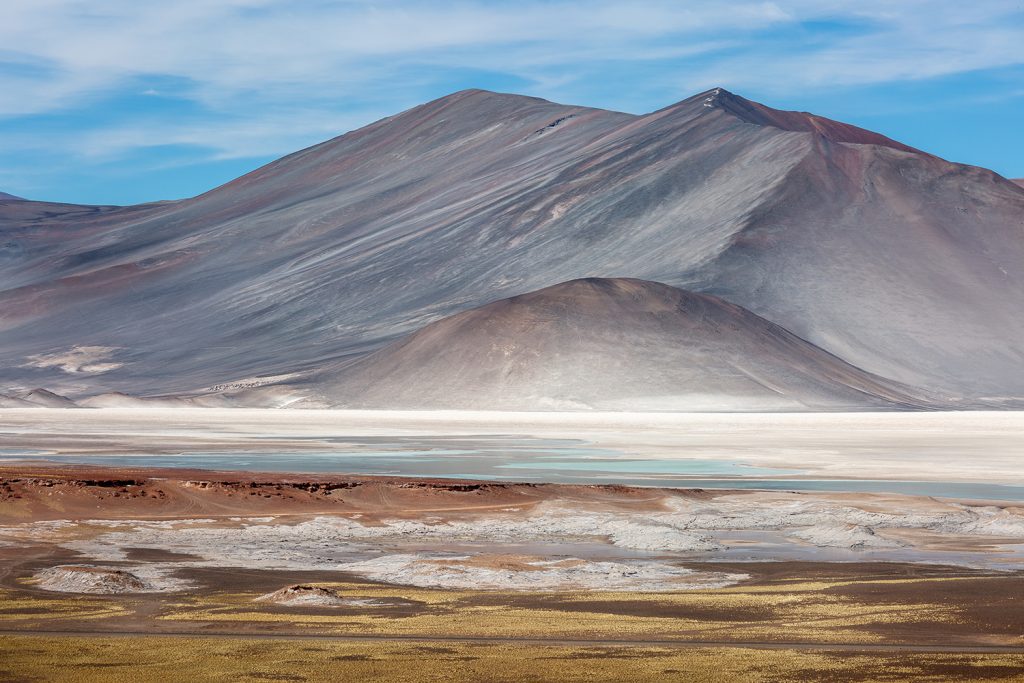
Old, hot and dry
The Atacama is the oldest desert on Earth and has experienced semiarid conditions for roughly the past 150 million years/ Scientists estimate that the desert’s inner core has been hyper arid for roughly 15 million years, thanks to a combination of unique geologic and atmospheric conditions in the area.
The Atacama is tucked in the shadow of the snow-capped Andes Mountains, which block rainfall from the east. To the west, the upwelling of cold water from deep in the Pacific Ocean promotes atmospheric conditions that hamper the evaporation of seawater and prevent the formation of clouds and rain.
In other deserts around the world, like the Sahara, the mercury can soar above 130 degrees Fahrenheit (50 degrees Celsius). But temperatures in the Atacama are comparatively mild throughout the year. The average temperature in the desert is about 63 degrees F (18 degrees C).
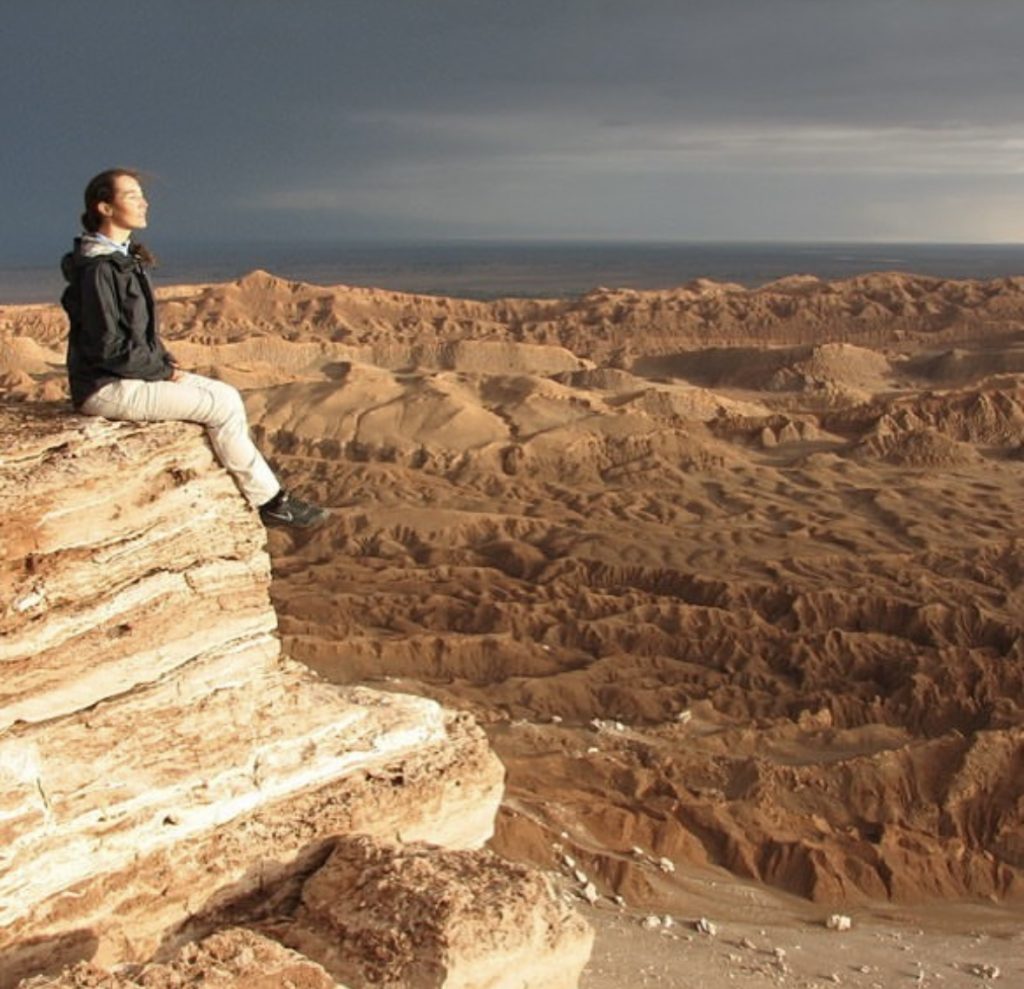
Geologic wonderland
Much of the Atacama Desert’s core is caked in thick salt deposits called playas, which can stretch for miles and are nearly half a meter thick (1.6 feet) in some places. The desert is speckled with stones that have been carried across the playas by powerful wind gusts. Alluvial fans, which are large, fan-shaped sediment deposits, connect the desert plateau with the mountains that surround it and suggest that water once flowed from the Andes into the desert.
The Atacama also features a 435-mile-long (700 km) and 12-mile-wide (20 km) swath of desert known as the nitrate belt. Nitrate minerals can be found in everything from explosives to fertilizer and were mined extensively in the Atacama before the 1930s.
Traditionally scraped from the desert’s crusty surface or mined from rocky veins, nitrates were initially thought to be carried to the desert by wind-swept sea spray. Recently, scientists discovered that one of the sources for the desert’s “white gold” might be ancient, evaporated groundwater.
Other materials, such as lithium, copper and iodine, have also been mined nearby.
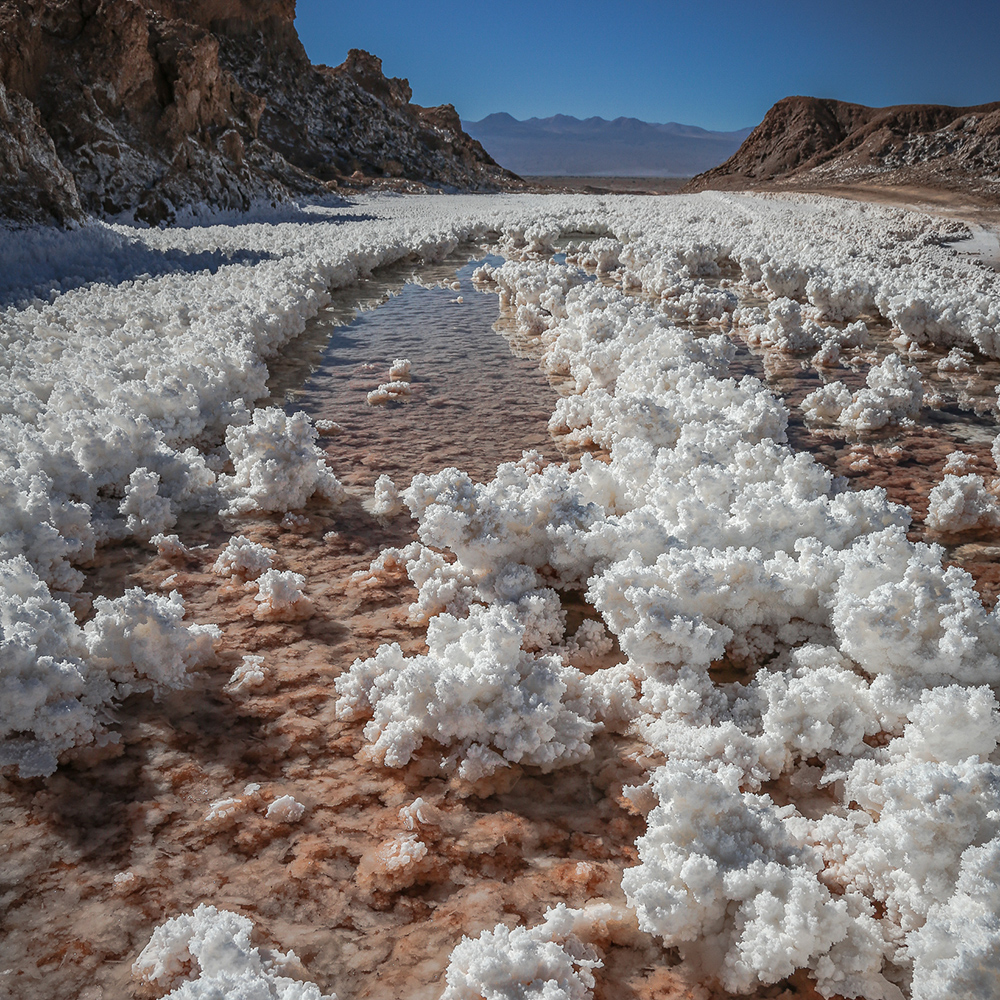
Our top recommendations for the best attractions and places to visit in Atacama:
- Star gazing: With some of the clearest skies in the world, the Atacama Desert is a popular destination for stargazing and astronomical observation. Visitors can go on guided tours or visit one of the many observatories in the area.
- Moon Valley: This moon-like landscape features otherworldly rock formations, sand dunes, and canyons, offering a unique and breathtaking experience for visitors. The circuit goes from the Quebrada de Cari, the salt caves –not suitable for claustrophobic people– and the Duna Mayor, ideal for climbing in the late afternoon, to the Tres Marías formation.
- Geysers del Tatio: This geyser field is one of the largest in the world and is an incredible sight to behold. Visitors can take a guided tour and witness the geysers erupting at sunrise.
- Salt flats: The Atacama Desert is home to several vast salt flats, including the Salar de Atacama, which is one of the largest salt flats in the world. These stunning landscapes are ideal to explore and capture stunning photographs.
- Hot springs: The Atacama Desert is home to several hot springs, including the popular Puritama Hot Springs. Visitors can soak in the warm, mineral-rich waters and enjoy the scenic surroundings.
- Cejar Lagoon and Piedra Lagoon: The Cejar lagoon is part of a hydrological basin caused by an accumulation of salts. The most curious thing is that, in the midst of this saline material (with a high toxic content), abundant swampy vegetation grew, called a bofedal. These reed beds, wild straw and pitch are enough to house small families of flamingo, ducks and seagulls.
- Bird Watching: Chaxa Lagoon is located in the eastern sector of the Atacama salt flat. It is the largest lithium reserve on the planet. But the reason everyone goes there is to get a meal of altiplano birds. There is the Chilean flamingo, the small parina and the great parina and at certain times of the year the Puna plovers, the eaglet, the Andean gull and the Baird’s sandpiper also arrive.
- Sandboarding and dune buggies: The Atacama Desert is known for its vast sand dunes, which provide a thrilling and unique experience for adventure-seekers.
- Explore San Pedro de Atacama: The largest oasis in the Atacama desert has a stable population of five thousand inhabitants, almost the same number of dogs that roam among the adobe houses, a colonial church of brilliant white and, paradoxically, one of the most expensive square meters in Chile in its most sparsely populated region with the fewest services.
- Cultural tours: The Atacama Desert is also home to several indigenous communities, including the Atacameños, who have lived in the area for thousands of years. Gain knowledge about the history, traditions, and way of life of these communities.
These are just a few of the many activities and experiences available in the Atacama Desert and that can be done daily from San Pedro de Atacama. Whether you are looking for adventure, relaxation, or cultural experiences, the Atacama Desert has something to offer for everyone.
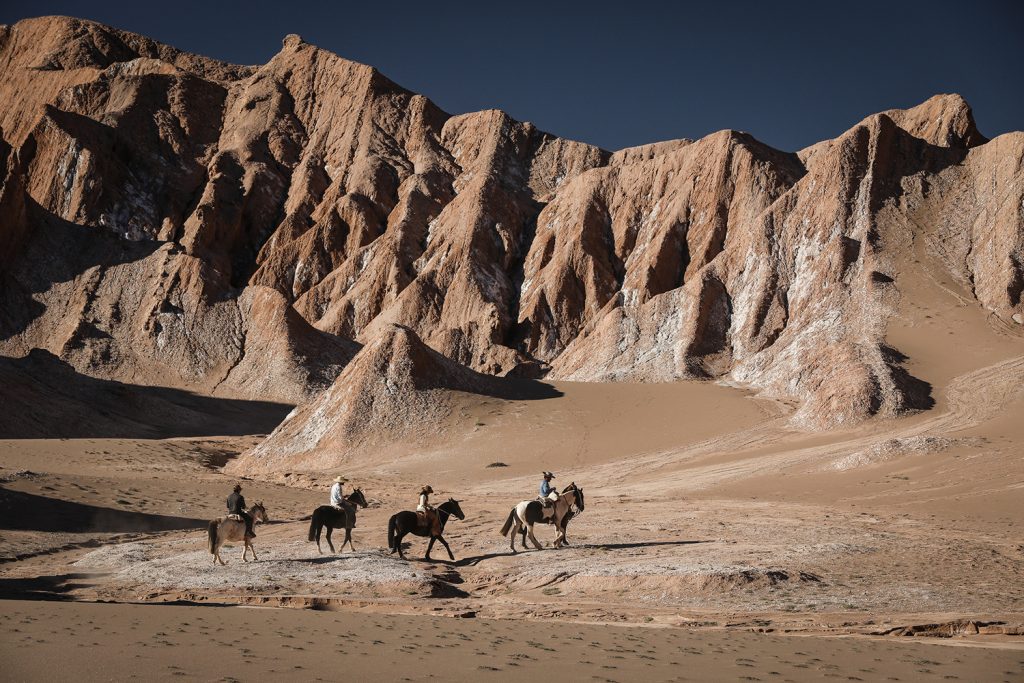
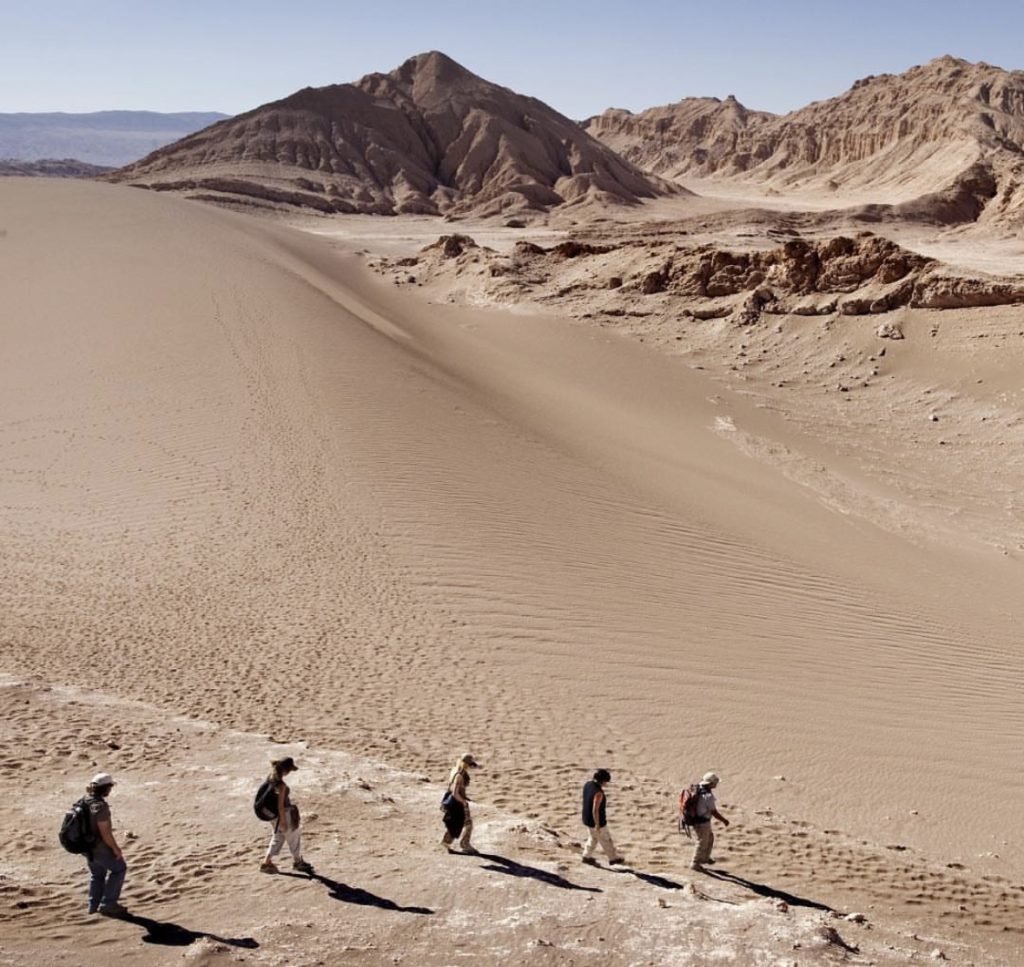
How to get from Santiago de Chile to San Pedro de Atacama
Sky Airline, LATAM Chile and JetSMART fly from Santiago to Calama every 2 hours. Alternatively, Pluss Chile operates a bus from Santiago to Calama hourly. (The bus takes 22 hours). A shuttle can be arranged ahead of time for transport from the Calama airport to your accommodations in San Pedro de Atacama, which takes just over an hour.
If you plan to travel…
- The Atacama Desert is a very popular destination. If your dates are not flexible and you plan to travel in the high season (especially the last two weeks of December and the first week of January), book your accommodations one year in advance if you can only travel during that time.
- The desert sun burns even if it is cloudy. Dark sunglasses, a hat, and sunscreen are essential. A flashlight is also useful.
- In San Pedro there is no bank, but there are three ATMs. In any case, it is advisable to carry cash in Chilean pesos.
- Although it is a desert and it is very hot, at night it is very cold. Take a lot of warm clothes.
Remember planning a memorable vacation is more than a few quick clicks online. Contact us and our local travel experts will help you plan so you don’t have to worry about the details yourself.



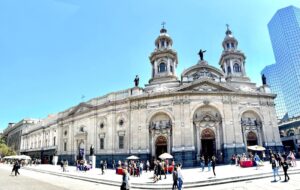


No comment yet, add your voice below!